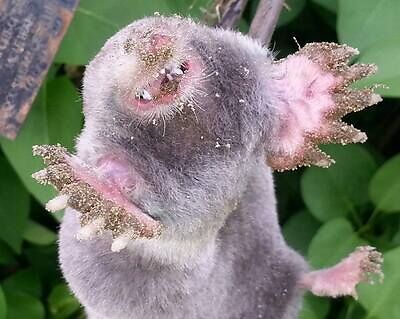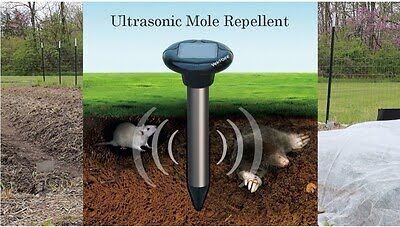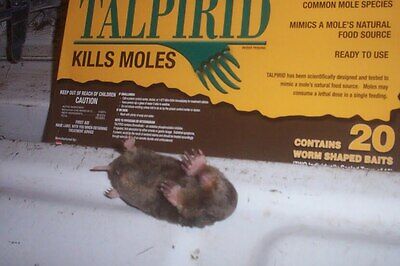Call us: 979-773-3060
Welcome to College Station Mole Control! We are a wildlife control company which services Brazos County, Texas. We specialize in the removal of moles - the animals - and other unwanted animals you may have on your property. Moles love to dig tunnels, resulting in large molehills and tunnels all over your yard. While these aren't exactly dangerous, they can damage your landscape and backyard and cause a nuisance. To deal with moles, we use professional trapping methods and make sure to prevent moles from overrunning your property again. Call us 24/7 at 979-773-3060 to schedule an appointment the same day or the next. We aren't considered College Station's best animal removal company for nothing! You can check out our College Station mole removal prices. Some of the services we offer include:
- 100% Mole Removal Via Trapping
- Full Property, Garden, & Yard Inspections
- Prevention and Lawn Treatments
- Poison-Free Mole Control
- Effective Mole Trapping Methods
- Repair of Lawn and Sod, Mole Hill Removal
Some Educational Articles I Wrote:
CALL US ANYTIME AT 979-773-3060

We are experts in mole control and are not your typical College Station, Texas pest control or exterminator company. First, we do not use poisons or the majority of repellents, since they do not work. Moles are difficult to remove and can only really be completely removed from your yard with mole traps, a process we have practiced and perfected over the years. In addition, if a mother mole has babies, we will make sure to remove her pups by hand before dealing with the mother mole. We are not a typical College Station mole exterminator company. We completely solve your mole problem by taking these steps:
- Inspect the entire property grounds - lawn, yard, garden, etc.
- Set several pro traps in mole tunnels - the correct and safe way!
- Remove all moles as they are caught and monitor for activity
- Once there is no more activity and no more moles caught, we're done
- When needed, fill in tunnels and seal with underground fencing
What Prices Do We Charge?
Every wildlife situation is different: How many moles? Size of lawn? Do you need trapping, prevention, repairs? Call us and we can give pricing for your specific situation.
College Station mole pest control animal tip: Mole behavior: how do moles live and dig?
Moles are one of the most problematic creatures to farmers, yard owners, or golf course managers. Because of their natural tendency to navigate the earth underground, they can destroy the soil structure around an area with constant digging.
It is difficult to observe a mole's destructive tendencies until it has completely ruined the ground around them. The big mounds at the entrance/exits of their holes are usually the visible evidence of their presence in an area.
Features
Moles have grey or brown fur covering most parts of their cylindrical body. They also have small hidden eyes and ears, with smaller hind feet. Their large forefeet and fingers are the most prominent and bizarre part of this animal. They also have pinkish snouts at the front of their face.
Living habits
Moles are active almost all throughout the day. They are fossorial by nature and forage for food in their broad, complex burrows and tunnels. However, they prefer loose, moist soil; a big reason they are abundant in fields, meadows, forests, and so on.
They are also solitary animals and can control areas (underground) extending as large as 2.7 acres. They have various tunnels for different needs and can dig new tunnels if a need arises. It makes them very destructive in just a little amount of time.
What do moles feed on?
Although moles are serious pests for farmers, and lawn/yard/golf course owners, they do not feed on plants/grass. Moles are carnivorous and prefer insects or other smaller animals. However, worms, grubs, and other insects form a large part of their diet. It makes them burrow deeper, complex, and wider tunnels.
However, their activities underground make them destroy roots, shrubs, bulbs, and stems of plants. They also tamper with the soil structure of an area.
Damage moles cause
Moles can dig as much as 15 feet in less than an hour and have to eat more than their body weight to remain active. It makes them a constant menace to man.
Moles never hibernate, and during winter, they dig deeper tunnels in search of warmth and insects.
Moles are carriers of other parasites like fleas, ticks, and lice. These parasites are easily transferred to human settlements.
Molehills are an eye-sore in your field or lawn, and other animals use their holes to wreak havoc.

Copyright 2021 - pestmole.com - 979-773-3060
• College Station, TX Animal Mole Control


